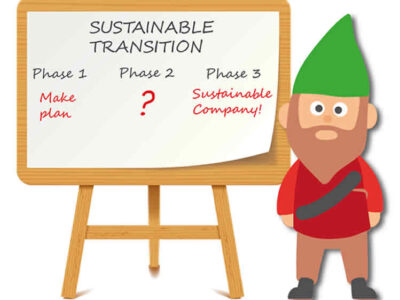What is a sustainability issue?
Well, almost anything.
But sustainability is essentially a human concept; it wasn’t an issue before humans started impacting the planet and each other on a large scale.
Because sustainability is so broad, almost anything can be considered a sustainability issue.
Sustainability is fundamentally about human interaction, impact on the environment and on each other, environmental and social issues.
Economics is traditionally added as a third pillar of sustainability – but others see it simply as a form of social issue.
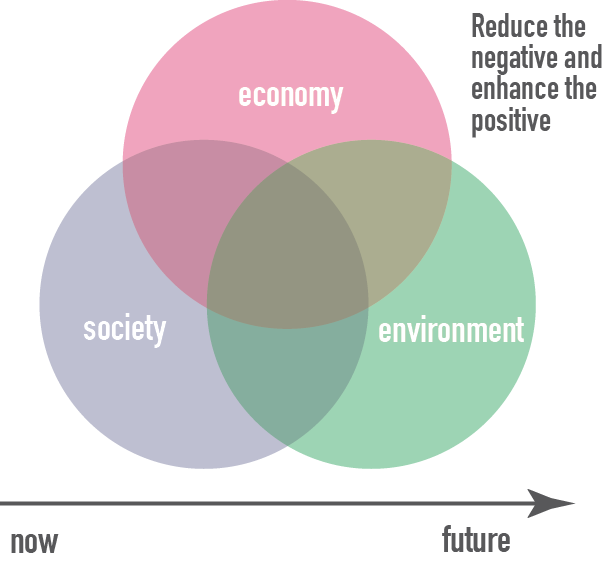
What are the problems?
For millennia we have used the world’s natural resources to sustain us but it’s only logical that these resources are finite. Scarcity can lead to price rises, hardship and conflict. It also leads to increased efforts to find new resources, often with further or different consequences.
Our increasing and inefficient use of resources has knock-on effects including climate change, loss of biodiversity, pollution, poor health and poverty. These issues are interlinked and in turn often exacerbate each other.
The scale of the environmental/social challenge is enormous. We need to fundamentally change the ways things are done to achieve sustainable development. This will need to go beyond resource efficiency to changing the way things are used and made, including cradle-to-cradle processes, dematerialisation and moving from products to services. Sometimes people need help and that’s where sustainability consulting services like ours come in.
Issues of Sustainable Development
Sustainable development represents both a vision for a better future and a practical pathway to achieve it. However, translating that vision into reality is not without profound challenges. The problems of sustainable development are complex, and frequently exacerbated by global interconnectedness, short-term political thinking and economic inequality.
Systemic Instability and Conflict
Armed conflict, political instability and regional insecurity remain major barriers to sustainable development. Wars disrupt food supply chains, energy access and economic stability, undermining national and international efforts to reduce poverty or transition to low-carbon infrastructure. The war in Ukraine, for example, highlighted the fragility of global food and fuel systems and the over-dependence of many nations on a narrow range of external suppliers.
Sustainability Isn’t Equal Everywhere
Global policy conversations often overlook the reality that sustainable development solutions are not one-size-fits-all. Many developing nations rely on natural resource extraction or energy-intensive industries to meet immediate economic needs. While the long-term goal may be sustainable, transitional support (including financing, knowledge-sharing and technology) is essential if we are to avoid asking nations to sacrifice growth and equity in the name of environmental responsibility.
Poverty, Inequality and Social Inclusion
Tackling poverty lies at the heart of sustainable development, yet the structural causes of poverty – from lack of access to education and healthcare, to energy poverty and gender inequality – persist across many regions. Efforts to build sustainable economies must also support inclusive growth, so that marginalised communities are not left behind by transitions to developed infrastructure or digital economies.
The COVID-19 pandemic reversed years of progress on poverty alleviation, with millions pushed back into extreme hardship. A sustainable recovery must therefore re-prioritise equity and resilience alongside climate goals.
Political Will and Governance
Governmental priorities are not always aligned with sustainability. Policy can be driven by short election cycles, legacy industries or powerful lobbies. Where economic pressures are sharp, sustainability may be prioritised less in favour of job retention or industrial competitiveness – even if those choices exacerbate long-term vulnerabilities.
True progress requires consistent, courageous leadership and coherent governance frameworks that integrate environmental, social and economic dimensions. This is especially true in regions where sustainable development goals clash with political populism or polarising interests.
Limited Access to Necessities
Sustainable development efforts are hindered by a lack of fundamental necessities like clean water, healthcare, education, and sanitation. Millions of people are without these basic needs, slowing their quality of life and limiting their potential to make meaningful contributions to society and the economy. Addressing these needs is crucial to rectifying sustainability problems, promoting social wellbeing.
Urbanisation and Population Growth
Global population growth and accelerating urbanisation are placing increasing strain on infrastructure, resources and essential services. As cities expand, challenges such as inadequate housing, congested transport networks and rising energy demand become more acute. Without careful planning, these pressures risk undermining both quality of life and environmental resilience. Sustainable urban development offers a critical opportunity to design systems that are efficient, inclusive and capable of supporting thriving, future-ready communities.
The Challenge of Growth and Resource Limits
Rapid population growth in some regions, coupled with rising consumption globally, places unsustainable pressure on natural systems. The challenge is to decouple human development from environmental degradation – shifting towards circular, regenerative economic models that restore rather than deplete ecosystems.
This requires innovation, but also a fundamental rethinking of value – away from linear extraction and throughput, and towards systems that reward stewardship, efficiency and long-term thinking.

These are global issues – what can we do as a single company?
Single organisations rarely achieve global change. Responding to these issues requires focus, first upon what you control (your products, services and operations) and then what you depend upon (resources, energy, partners and suppliers). In addition, it also involves what you influence through relationships, leadership and innovation.
The changes you may be able to make might be incremental (how you do things) or more major (the things you do).
Examples might include your approach to business, specific projects or products, behavioural change programmes, changes to your value chain, alterations to performance management or governance. Learn more about Sustainable Transition >>
Why should we?
Contributing to a more sustainable future will bring a range of benefits. In the short-term you will benefit from enhancing your sustainability / CSR credentials, meeting and moving ahead of pressures from regulators and stakeholders and finding efficiency-based cost savings too.
Long term benefits include enhanced stakeholder and investor support, lower risks in your value chain, enhanced brand and reputation, better employee relations and knowing you are doing the right thing for our children and grandchildren.
Which sustainability issues matter for businesses?
The sustainability issues that are important for businesses are no different to those that are important for other organisations, governments or individual citizens. However, their responsibility and what they can and need to take action on can often be different.
The pressure for sustainable business is gathering pace.
There is a growing global recognition (in many places anyway) that responding to the accelerating climate crisis, species loss, plastic pollution, inequality and delivering the UN Sustainable Development Goals is a job not just for policy makers and the public but key to the long term health and survival of business.
Periodically we review and write about what matters and how businesses and other organisations can understand, navigate and take action on sustainable development issues.
DISCOVER MORE | Sustainability Issues
Coffee ads banned for misleading ‘compostable’ claims
Two major coffee brands, Lavazza and Dualit, have had their adverts banned by the UK’s Advertising Standards Authority (ASA) for making misleading claims that their coffee pods and bags were ‘compostable’.
The ASA found that both companies gave the false impression that these products could be …
Reputation risk and sustainability – who do you work with?
Reputation is widely regarded as one the most valuable assets of an organisation. Sustainability can also be an important contributor to both reputation and several dimensions of business value.
In this article we explore different dimensions of reputational risk, how it might be affected and how …
Sustainable Aviation?
On the 28 November 2023, the first long-haul passenger plane powered with ‘sustainable’ air fuel took off. SAF offers an ostensibly attractive path for decarbonisation for the airline industry – the lifecycle greenhouse emissions can be up to 70% lower than conventional fossil-based fuels.
While …
Sustainable transition – waiting for the underpants gnomes?
Dramatic changes are needed in business and industry to head off coming poly crises and build a prosperous future for the growing global population.
But plans for this ‘sustainable transition’ are few and far between and often lack credible substance to bridge the link between ambition and action. …
WEF Global Risks 2023 – What’s new and what’s changed?
While big picture environmental threats of climate change, nature loss and ecosystem collapse remain long term risks, geopolitical instability and the current cost-of-living crisis challenges present emerging challenges to the chance for global consensus and coordinated action.
The WEF (World …
2023 sustainable business trends and challenges – what to watch out for
From avoiding greenwashing to facing soaring business costs, 2023 is set to be a challenging year for most business leaders to navigate.
Regulators, customers and consumers have increasing expectations for good quality, consistent information on sustainability. Communication must be accurate and …
Sustainable value creation
Understanding the relationship between your organisation and the wider world, and identifying which issues, trends, dependencies and risks are material (important) to your business future is critical. Not just for measuring and managing impact, but also for developing resilience and responding to …
Something in the air – the burden of air pollution
Small particle air pollution – when will we clear it? PM2.5 (small particle) air pollution is one of the most harmful types for human health, exposure has been linked to heart and lung disease, mental health and many other conditions including stroke, cancer and mental health. Air pollution …
Global Risks 2022
Most major sustainability issues have important risk dimensions for companies – and societies. In many cases these are still not adequately represented in board-level discussion, company risk assessments or registers.
WEF’s Global Risk Report provides a very useful, comprehensive global review and …
COP 26 – WHAT WAS ACHIEVED?
Overall Glasgow’s COP26 made good progress in some areas but failed to move others forward – what was really achieved? The world is still way off track for the Paris 1.5 degrees C – the widely accepted target that only really represents ‘hopefully not too dangerous’.
Sustainability Issues by Year
Sustainability Issues of 2025
What will be the biggest issues in sustainability in 2025?
While the specifics evolve year by year, the core sustainability challenges remain stubbornly familiar: escalating plastic pollution, widespread food waste, extreme weather conditions, accelerating biodiversity loss, and the relentless conversion of natural systems into industrial ones. These are not isolated issue; they are interconnected symptoms of how we define and pursue progress.
A resurfaced article from The Guardian, originally published in 2020, continues to circulate: it highlights the point at which the mass of human-made materials (buildings, roads, plastics, machines) exceeded the total biomass of the planet. This statistic is more than symbolic; it reflects a fundamental imbalance between what we extract and what the Earth can sustain.
In 2025, progress still appears uneven. For every milestone reached, there are setbacks that raise questions about the pace and depth of change. But business leaders are not without agency. The pressures are real, but so are the opportunities. The question is not simply what sustainability looks like this year, but what decisions can tip the balance between marginal gains and meaningful transformation.
AI: Artificial Intelligence?
In 2025, artificial intelligence continues to be positioned as a technological cornerstone for solving complex sustainability challenges. Its perceived potential is wide-ranging, from real-time emissions tracking and climate modelling to energy grid optimisation, predictive weather analysis, and even ecosystem monitoring. In theory, AI offers unprecedented capacity to handle complexity, surface insights and enhance decision-making across environmental and industrial systems.
But for all the enthusiasm, the sustainability benefits of AI remain largely theoretical. Much of its promise has yet to translate into real-world, scalable impact and the environmental costs of the technology itself are growing rapidly.
The resource demands of training and operating large AI models are substantial. Computational-intensive systems require vast amounts of electricity and water, particularly for cooling large data centres. As demand accelerates and industry competition intensifies, these pressures are expected to increase. One study undertaken by Cornell University researchers estimates AI’s global water withdrawal could reach over 6 billion cubic metres annually by 2027, raising valid concerns about the true cost of “smart” infrastructure.
Some providers are taking steps to mitigate these impacts, such as sourcing clean energy, optimising hardware design, or pursuing more efficient algorithms. But efficiency is not a cure-all. The so-called rebound effect – where efficiency gains drive increased use – remains a structural risk. Without parallel shifts in behaviours, expectations and business models, the net environmental impact may continue to grow.
There is also the risk of misplaced confidence. AI is often used as a proxy term for more conventional automation or optimisation tools, allowing companies to invoke innovation without necessarily delivering transformation. The inflation of the term obscures the critical questions: Where is AI truly adding value? And at what cost?
In 2025, the challenge is not simply how to use AI but how to govern it. Discussions around responsible AI are beginning to expand beyond ethics and bias to include environmental metrics. For AI to support sustainability in practice, it must be subject to the same scrutiny as any high-impact system: assessed not only by its potential, but by its actual outcomes within ecological limits.
The intersection of digital transformation and sustainability offers immense opportunity but only if we are honest about trade-offs, clear about intent, and willing to design for long-term viability rather than short-term optimisation.

Climate Policy in a Fractured World
In 2025, the stability of global climate governance remains under pressure. Armed conflicts, shifting political alliances and economic volatility have complicated the landscape for international cooperation, placing strain on the many-sided frameworks that underpin climate ambition.
Ongoing crises in Gaza, Ukraine and Sudan have reshaped national priorities and diverted political attention away from collaborative environmental efforts. In such a climate, the challenge is no longer just about setting bold climate goals – it is about sustaining them amidst disruption, uncertainty and competing demands. But this raises a question: Can we, in good faith, move forward with sustainability efforts whilst neglecting to help those in the most need across the globe? Is true sustainability even achievable in a world where global policy is still dictated by the wealthiest percentage with the most to lose?
With the re-election of Donald Trump, questions have resurfaced around the country’s climate trajectory. A renewed withdrawal from the Paris Agreement and potential dismantling of the Inflation Reduction Act (IRA) are widely discussed scenarios. Yet these actions may be less straightforward than headlines suggest. Many Republican-led states have become major beneficiaries of IRA investments, particularly in clean energy manufacturing and infrastructure. Public support for climate action remains strong, even where political narratives diverge. The tension between federal rhetoric and state-level economic interest could result in a fractured, uneven decarbonisation path rather than outright reversal.
In Europe, similar pressures are emerging. Political uncertainty in key economies (Germany, France, and others) risks eroding the cohesion of the EU’s climate agenda. While the major state players in the EU (also known as ‘the bloc’) have made significant strides in climate regulation and energy transition, economic headwinds and rising populism threaten to stall progress or fragment collective ambition.
The UK, under new leadership, has expressed commitment to green industrial policy, particularly around hydrogen and net-zero technologies. However, fiscal constraints and public sector pressures may limit the scale and speed of investment. There is recognition of the opportunity, but questions remain over the means.
Across all contexts, one theme is consistent: climate policy is increasingly defined not just by scientific necessity, but by political resilience. The ability to sustain and implement long-term strategies depends not only on ambition, but on institutional stability, public legitimacy and economic adaptability.
As global systems face compounding risks, climate action will require a renewed emphasis on durability, embedding sustainability not just in targets, but in the governance and policy mechanisms built to endure beyond electoral cycles and geopolitical shocks.
Commitment vs. Capacity for Climate Finance
In 2025, the conversation around climate finance continues to evolve, but not always at the pace or scale the crisis demands. The most notable milestone is the agreement reached at COP29 in 2024: the New Collective Quantified Goal (NCQG) on Climate Finance. It sets a new annual target of $300 billion in climate funding, to flow from high-income to lower-income nations by 2035.
This figure builds on the long-standing $100 billion pledge first made in 2009 and finally met (at least on paper) in 2022. While the $300 billion target signals a step forward in ambition, it still falls far short of the trillions needed to meet the global costs of mitigation, adaptation and resilience. In this context, the NCQG is less a destination than a waypoint.
At the same time, the operational launch of the Loss and Damage Fund (LDF) in 2025 marks a critical, though contested, development. Designed to provide financial support to countries suffering from climate-driven disasters – such as the floods that devastated parts of the Sahel and South Asia – the fund aims to address long-standing concerns about climate equity and historical responsibility.
However, the LDF’s exclusion from the NCQG framework has raised serious concerns over its long-term stability and adequacy. Without firm and sustained commitments, the fund risks being more symbolic than structural, which unfortunately offers hope without reliable delivery.
On the private side, momentum is building. Financial institutions are increasingly aligning portfolios with environmental objectives, supporting instruments such as green bonds, nature-based carbon credits and investments in natural capital. These nature-positive approaches hold the potential to build resilience and unlock long-term value, particularly as companies face escalating climate risks.
Yet, major hurdles remain. Private finance is still often misaligned with equitable decarbonisation, and access to funding (particularly for smaller or lower-income economies) remains limited. Fragmented mechanisms, risk-averse capital and unclear metrics continue to undermine progress.
Climate finance is slowly becoming more visible and structured, but even the best consulting firms for sustainability will attest that in a world shaped by systemic risk and asymmetric impact, the challenge ahead is not just to raise more money, but to deploy it where it matters, in ways that are just, regenerative and strategically transformative.
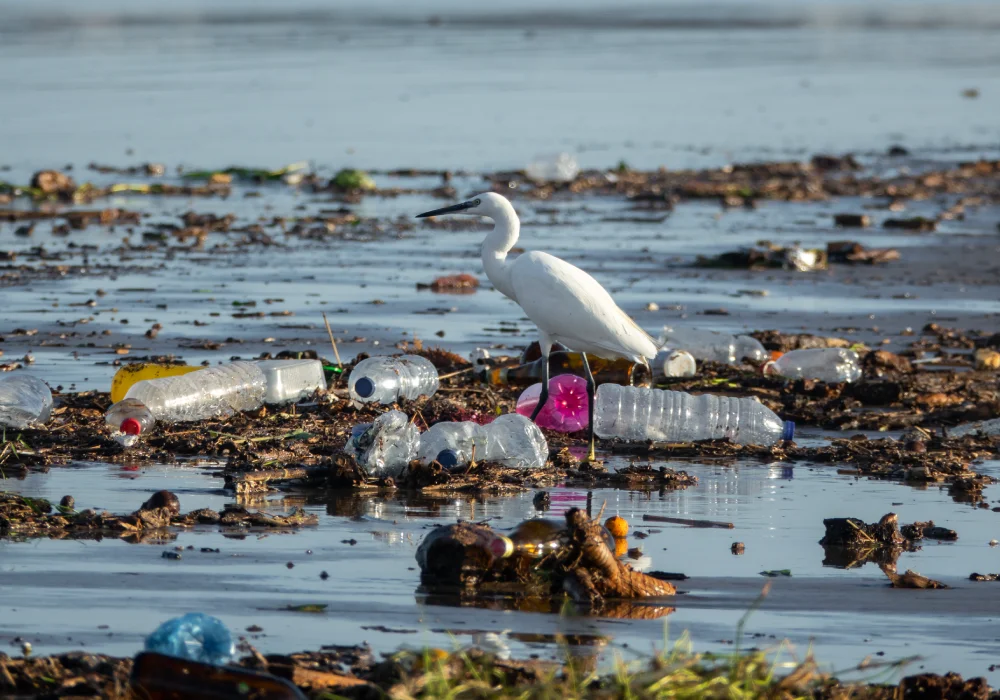
Sustainability as a Story
As sustainability becomes more embedded in business strategy, the way it is communicated matters more than ever. While regulatory frameworks continue to drive rigour in environmental, social and governance (ESG) reporting, many organisations are recognising that data alone is not enough. Narrative, when approached with clarity and integrity, can play a vital role in shaping perceptions, reinforcing purpose and connecting sustainability efforts to broader social and commercial goals.
In 2025, a growing number of firms are moving beyond the template of dense, data-heavy reports. They are experimenting with more engaging, human-centred storytelling and using real-world examples, community partnerships, and employee-led initiatives to make their commitments tangible and accessible. When executed thoughtfully, this shift can deepen engagement across stakeholder groups: investors may still prioritise materiality and outcomes, but employees, customers and communities increasingly respond to purpose, relevance and authenticity.
However, storytelling is not a substitute for substance! It must be rooted in verified data, measurable progress and transparent governance. Without this foundation, narrative risks slipping into a greenwashing strategy.
Effective sustainability storytelling begins with listening; it reflects the values of the people it seeks to reach, the context in which it is told, and the complexity of the challenges it addresses; it acknowledges trade-offs, admits limitations and highlights the systems (human, ecological, and technological) that underpin sustainable outcomes.
Ultimately, sustainability storytelling is not about crafting a marketing message. Many sustainability business consultants will say it’s about building trust, embedding long-term thinking, and showing clearly and credibly how a business understands its role in shaping a more resilient and regenerative future, which is more important than ever.
Water and Waste
Water has long been treated as an abundant, passive resource; something to be extracted, used and discharged with minimal attention to its limits or value. In 2025, this view is not only outdated but increasingly dangerous. Climate change is intensifying a dual crisis of water scarcity and water quality, with implications for health, food security, industrial activity and ecological integrity across the globe.
In many low and middle-income countries, basic access to clean, safe drinking water remains elusive. Recent estimates suggest that 4.4 billion people still lack access to reliable water services – far higher than earlier global assessments. In these regions, water is not just a sustainability issue, but a public health emergency and a constraint on human development.
Yet the crisis is not confined to the Global South. Prolonged droughts, water table depletion and contamination incidents are increasingly affecting high-income regions, from wildfires in California to water stress in parts of Texas, Nevada and southern Europe. In developed markets, ageing infrastructure and pollution from industry and agriculture are exposing systemic vulnerabilities. In the United States alone, over two million people still lack access to clean drinking water at home.
The pressure on freshwater resources is largely driven by a handful of sectors. Food, textiles, energy, pharmaceuticals, mining and chemicals collectively account for the majority of global water withdrawals and are responsible for a significant proportion of wastewater discharges, most of which (even today) are released untreated – this can continue to happen with little regard to the effects on the surrounding environment because, as it stands, it’s not actually illegal (but it does have an adverse effect on local bodies of water). Industrial processes, energy production and global supply chains are tightly entwined with water use, yet water risks remain under-recognised in many corporate strategies and investment models.
Addressing these challenges requires more than technical fixes; it demands a systemic shift in how water is valued, governed and managed. For investors, this means moving beyond disclosure and into stewardship, supporting infrastructure finance, scaling circular water technologies and engaging with high-impact sectors on meaningful reductions in water withdrawals and pollution. Green bonds, nature-positive portfolios and public-private partnerships all have a role to play, but only if they are grounded in accountability and ecological outcomes.
The story continues into the oceans. As climate change, pollution and overexploitation converge, the role of the marine environment as a carbon sink, biodiversity reserve and source of human sustenance is under threat. Around 80% of marine litter is plastic, with widespread impacts on ecosystems and food chains. Overfishing, habitat degradation and deep-sea mining compound these pressures.
Ocean risk must be incorporated into sustainability strategies with the same urgency and rigour as land-based systems. In short, water (whether fresh or saline) can no longer be taken for granted; it is a foundational system upon which both life and economy depend. Valuing water is not just about pricing it correctly but rather about recognising its ecological, cultural and systemic significance in an era of intensifying constraint.
Sustainability Issues of 2024
What were the biggest issues in sustainability in 2024?
If previous years saw promises made and targets set, 2024 became a year of both climate reckoning and systemic momentum. Record temperatures and irreversible ecological trends sharpened the stakes, as progress in energy, urban systems and resource efficiency revealed glimpses of transition underway. The story of sustainability in 2024 was one of contrast: accelerating innovation on one hand, and deepening planetary pressure on the other.
The First Year Above 1.5°C
In 2024, global warming broke another boundary. According to the Copernicus Climate Change Service, this was the first full calendar year with average temperatures exceeding 1.5°C above pre-industrial levels (an internationally agreed limit widely viewed as critical for avoiding the most dangerous impacts of climate change).
This threshold, once a warning, has now been breached. Combined with increasingly visible impacts – rising sea levels, heatwaves, water stress and biodiversity collapse – 2024 sent a stark message: incremental action is no longer enough. The challenge now lies in maintaining liveable conditions within shrinking planetary space.

Energy Milestones and Mixed Signals
There was significant momentum in the renewable energy sector throughout 2024. By August, China had already exceeded its 2030 renewable energy target, reaching over 1,200 GW of installed capacity; this is a sign of remarkable acceleration. The UK, meanwhile, ended the year with renewables contributing a greater share to electricity generation than fossil fuels, for the first time.
Electric vehicles continued to gain market share, with battery electric vehicles (BEVs) accounting for 18.7% of UK car sales, and EVs overall surpassing 20%. Hydropower also saw a 400 GW increase in global capacity, reinforcing its role as the world’s largest source of renewable electricity.
Yet, contradictions persist. Despite its renewable surge, China is still building over 41 GW of new coal plants, reflecting the tension between energy security, economic growth and decarbonisation. These mixed signals illustrate the ongoing complexity of transition: progress is happening, but not always in a straight line.
UK Phases Out Coal After 140 Years
A quiet but historic milestone was reached in September: the UK became the first G7 nation to completely phase out coal power, following the closure of the Ratcliffe-on-Soar power station. This marked the end of a 140-year chapter in British energy history, and a symbolic step away from the carbon-intensive past.
Though modest in global emissions terms, the decision set a precedent. It affirmed that legacy energy systems can be retired, and that policy, infrastructure and investment can be reoriented toward a post-coal future.
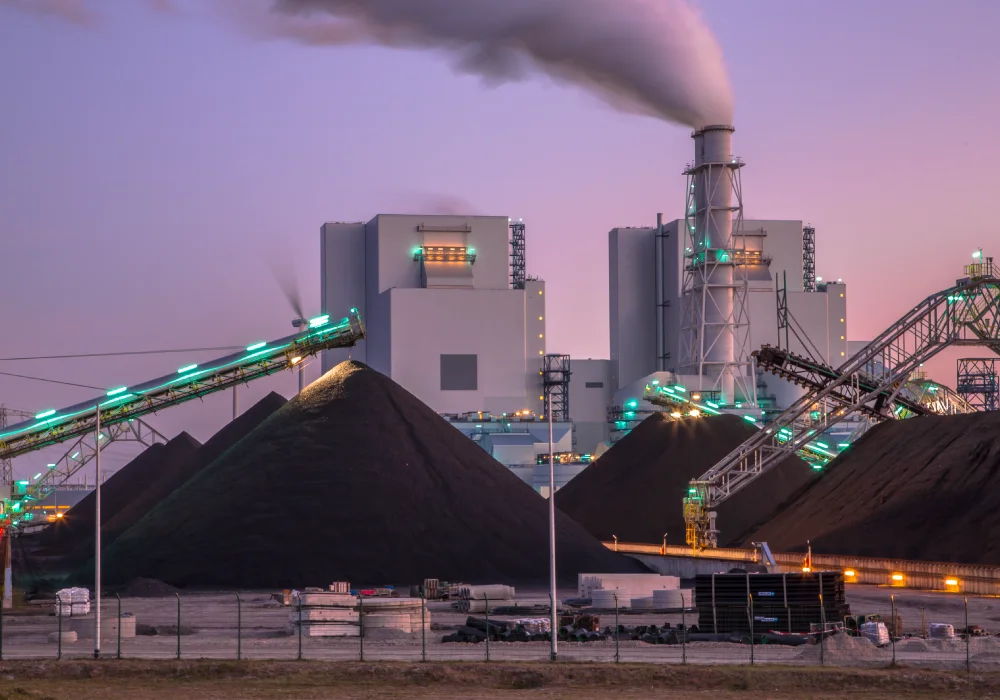
Sustainable Water Management on the Agenda
Water scarcity emerged as an increasingly critical sustainability challenge in 2024, especially for sectors dependent on intensive water use. As resource stress intensified, industries began adopting more sustainable practices, ranging from efficient irrigation and wastewater recycling to large-scale wetland restoration.
The drinks sector, long scrutinised for its water footprint, responded with several new initiatives. Danish brewer Carlsberg, for instance, launched collaborative projects with WWF in China and Laos, aimed at restoring wetlands and improving water availability across key basins. These efforts signal a growing recognition: water is no longer just an operational risk – it is a strategic sustainability priority.
Toyota’s Woven City
In 2024, Toyota completed major construction on its experimental Woven City – a prototype “city of the future” built around sustainability and ESG principles. Located in Japan at the foot of Mount Fuji, the project is designed as a living lab for autonomous vehicles, smart energy systems and low-impact urban design.
Although highly conceptual and corporate-led, Woven City points to a broader question: what might truly sustainable cities look like in practice? With real-world trials beginning in 2025, the development offers both inspiration and a test case for scalable urban transformation.
Sustainability Issues of 2023
What were the biggest issues in sustainability in 2023?
If 2022 was a year of ambition, tipping points and legal frameworks, then 2023 was the year those ambitions ran into political, economic and environmental friction. From historic heatwaves to growing corporate silence, this was a year marked by both progress and pushback. The issues shaping sustainability in 2023 were not entirely new, but their intensity, scale and contradictions reached new heights.
The Climate Breaks Its Own Records (Again)
2023 brought yet another relentless parade of climate extremes. Record-breaking heatwaves scorched cities, wildfires swept across continents, and deadly flooding displaced thousands. The UK recorded its second-warmest year since records began, with Wales and Northern Ireland experiencing their warmest years ever. Globally, scientists continued to warn that we are breaching critical ecological boundaries – on water, biodiversity, and carbon emissions – with cascading consequences.
What’s changing is not just the frequency or severity of these events, but their normalisation. As climate disruption becomes a regular feature of life, the real test is whether systems (political, financial and ecological) can adapt fast enough to avoid permanent damage.

ESG Backlash and Greenhushing
While ESG consultants (Environmental, Social, and Governance) like us understand that these principles were originally designed to help investors assess risk exposure, the term took on a very different tone in 2023. In the United States especially, ESG became a flashpoint for political backlash, with critics portraying it as a stand-in for “liberal values.” What began as a technical investment framework quickly became part of a wider cultural debate.
As a result, many companies retreated from visible climate commitments, adopting a strategy now widely known as green hushing: the practice of underreporting or downplaying sustainability actions to avoid scrutiny or politicisation.
This development poses a significant challenge to transparency and accountability. It also muddies the waters between risk management, public engagement, and genuine sustainability progress. Silence, in this case, is not neutrality – it’s regression.
COP28
The annual UN climate summit, COP28, held in Dubai, arrived under a cloud of conflict and contradiction. The summit was chaired by the CEO of the UAE’s national oil company, raising questions about the influence of fossil fuel interests on global climate negotiations. Debate centred on the introduction of “abated emissions” language, suggesting continued fossil fuel use could be justified if emissions are captured (a highly uncertain proposition at scale).
The final agreement appeared to endorse a global phase-out of fossil fuels, but the lack of clear timelines, mechanisms and accountability left many sceptical. In a year where climate damage became even more visible, the presence of oil influence at the centre of climate diplomacy reflected a broader dissonance: how can meaningful transition be negotiated when those with the most to lose are driving the agenda?
Meanwhile, citizens in several countries protested sustainability-related policies perceived to increase the cost of living, highlighting the need for just transition frameworks that address inequality as well as emissions.
China’s Clean Energy Surge
One of the most significant (and underappreciated) sustainability stories of 2023 came from China. The country’s national oil company, Sinopec, announced that peak gasoline demand had been reached, driven largely by a massive surge in electric vehicle adoption. In parallel, China was on track to add 150 gigawatts of solar capacity – almost double the previous year, and more than the total currently installed base in the United States.
Despite concerns over continued coal permits, many of these plants are intended as backup or are later shelved. The trend is clear: China is rapidly scaling clean energy infrastructure while investing heavily in domestic decarbonisation technologies.
Although political and environmental contradictions remain, China’s clean energy growth shows that transformational change is possible at pace and scale, especially when it is tied to national competitiveness and industrial strategy.

Declining Business Sustainability
Contrasting mounting environmental urgency, 2023 saw a marked decline in sustainability engagement among businesses. Fewer than one in three companies in the UK reported being passionate about improving their environmental performance (down from 39% the previous year). Perceptions of customer interest also fell sharply, with only 25% of businesses believing their customers cared about their sustainability credentials.
The primary barrier? Cost. Rising inflation and economic pressures made sustainability appear, for many, as an optional extra rather than a strategic imperative. Nearly half of all businesses (43%) cited implementation costs as their main obstacle (up significantly from 2022).
This trend reflects a broader risk: when sustainability is framed as discretionary or driven by marketing signals, it is easily displaced by short-term pressures. True sustainability requires embedding long-term thinking into core decision-making – not just when it’s convenient, but especially when it’s not.
Gathering Disclosure Momentum
Even as some companies ‘greenhushed’, regulatory pressure continued to grow. In 2023, new climate disclosure laws were introduced in Canada and Germany, requiring businesses to report on emissions and set clear targets across their supply chains. California, as the world’s fifth-largest economy by GDP, also passed two major climate-related transparency bills, amplifying their global relevance.
While these measures won’t fix everything, they shift the baseline. Transparency, when meaningful and enforced, remains a foundational step towards systems change.
Sustainability Issues of 2022
What were the biggest issues in sustainability in 2022?
While the world continued to grapple with the aftermath of the pandemic and ongoing economic volatility, 2022 brought a new wave of challenges, contradictions and potential turning points in global sustainability. From war in Europe to oil protests in art galleries, this was a year defined by disruption and the growing tension between urgency, ambition and delivery.
War, Energy Security, and Systemic Risk
Russia’s invasion of Ukraine in February 2022 triggered seismic shocks across global energy, food and commodity markets. The conflict exposed the fragility of supply chains and the geopolitical risks of fossil fuel dependency, particularly in Europe, where reliance on Russian gas had long shaped energy policy.
In the immediate term, nations scrambled to replace supplies, often reverting to short-term fixes such as LNG imports and reopening coal infrastructure. However, the crisis also accelerated long-term plans to transition away from fossil fuels. The European Union doubled down on clean energy investment and efficiency measures, framing energy independence as both a climate and security imperative.
The war underscored a key lesson for sustainability: resilience is not just about climate adaptation, but about reducing systemic exposure to volatile, carbon-intensive resources.
Climate Action in the United States
After years of stalled federal progress, the United States passed its most significant climate legislation to date. The Inflation Reduction Act (IRA), signed into law in August 2022, committed over $370 billion to clean energy investment, tax credits for renewable power, electric vehicles and domestic clean tech manufacturing.
While not perfect (due in part to fossil fuel concessions, limited environmental justice provisions, methane and industrial oversight, among other issues), the IRA marked a major policy inflection point. Its scale and structure aim to catalyse private investment, reduce emissions and build industrial capability, all while reframing climate action as a driver of economic growth and national competitiveness.
In a global context, the legislation helped reposition the US as a credible actor on climate, though questions remain about international equity, trade tensions and fossil fuel subsidies that persist alongside its progressive elements.
Just Stop Oil and Van Gogh’s Sunflowers
In October, two Just Stop Oil activists gained global attention by throwing tomato soup at Vincent van Gogh’s Sunflowers in London’s National Gallery. The painting, protected by glass, was unharmed – but the act sparked international debate about protest, tactics and the role of civil disobedience in climate discourse.
The protest was not simply symbolic; it highlighted a generational frustration with political inaction and the perceived failure of institutions to respond proportionately to the climate emergency.

While divisive, such actions have drawn attention to the widening gap between scientific warnings and policy timelines. Whether it was a particularly clever move to target this painting and this artist is, possibly, less up for debate.
The incident raised uncomfortable but necessary questions: How do we channel public urgency into system-level change? And at what point does disruption stop being an appropriate tool for climate accountability?
Electric Vehicles and Clean Tech
Behind the headlines, 2022 also marked a quiet revolution. According to a report from BloombergNEF, 87 countries reached a clean energy tipping point where solar and wind became the cheapest forms of new electricity generation. Meanwhile, the electric vehicle (EV) market accelerated rapidly, with major car manufacturers setting firm phase-out dates for internal combustion engines. Volkswagen, for example, announced it will stop selling petrol and diesel cars in Europe by 2033.
These trends suggest that in key sectors, technology-driven transitions are no longer future ambitions; they are unfolding now. However, scaling these gains equitably, sustainably and without creating new forms of dependency or extraction will remain one of the central sustainability challenges of the decade.
A Global Mandate on Plastic Pollution
That old chestnut again. It’s harder than ever to ignore, especially with news stories coming out all the time about how our bodies are becoming dumping grounds for microplastics. But in a more positive spin, in March, world leaders met at the UN Environment Assembly in Nairobi and agreed to begin negotiating a legally binding global treaty to end plastic pollution. The agreement commits nations to finalising a draft treaty by the end of 2024 – a significant step toward coordinated international action on a problem that has long lacked governance at scale.
While implementation remains some distance away, the agreement represents a milestone in acknowledging that voluntary, patchwork solutions are no longer sufficient. The global plastics economy, driven by linear consumption and underpinned by fossil fuels, requires systemic redesign, not just better recycling bins.
Brazil’s Leadership and the Future of the Amazon
In one of the most consequential elections for the planet’s climate, Luiz Inácio Lula da Silva defeated Jair Bolsonaro in Brazil’s presidential race. Bolsonaro’s term had seen widespread deforestation and weakened environmental protections, bringing the Amazon rainforest (critical for global carbon balance, and furthering sustainability efforts in the region) closer to ecological tipping points.
Lula’s victory was seen as a reprieve for the world’s largest rainforest. His campaign pledged to reverse deforestation, restore environmental oversight and re-engage with international climate agreements. While political obstacles remain, the result served as a reminder: leadership matters. The outcomes of national elections can shift the trajectory of planetary health.
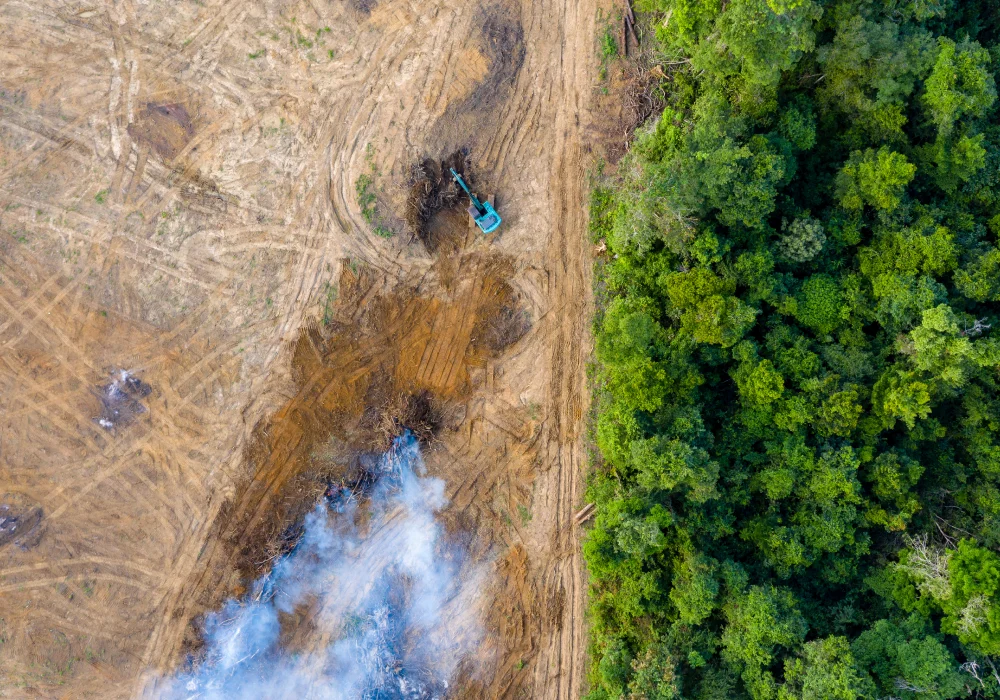
Sustainability Issues of 2021
What were the biggest issues in sustainability in 2021?
It’s safe to say that 2020 had its share of challenges and setbacks, maybe most notably the COVID-19 pandemic, which still saw itself into the new year of 2021 as countries scrambled for the best way to deal with it. But if we’re to start anywhere with regards to sustainability in 2021, perhaps it’s best to begin here.
The Effects of COVID-19 on the Environment
As the world entered 2021, it did so under the enduring shadow of COVID-19. The UK’s third national lockdown began in January, marking a continued effort to control the virus and protect public health. But beyond the immediate health and economic concerns, the pandemic served to amplify (and in some cases clarify) many of the sustainability issues already shaping the global agenda.
While temporary reductions in travel and industrial activity during lockdowns led to short-term improvements in air and water quality, these were not signs of long-term progress. Instead, they revealed how deeply modern economies are still entwined with resource-intensive models of production and consumption. The environmental signals of 2020 and early 2021 were not indicators of systemic change, but they did offer a glimpse into what might be possible.

Research from the UK’s Natural Environment Research Council (NERC) underscored that the pandemic must be viewed as both a crisis and a catalyst. Scientific evidence highlighted the interconnectedness of human health, environmental integrity and climate resilience, demonstrating how global shocks can ripple through social, ecological and economic systems.
Importantly, NERC-funded research provided insight into how the UK’s environmental science capability can support better outcomes. From real-time air quality data to tracking how wildlife and ecosystems responded to quieter, less disrupted human activity, the science showed both the fragility and adaptability of natural systems. Less nitrogen dioxide levels and small particle pollution was reported as being significantly lower in spring; these have adverse effects on conditions such as asthma, so a generally positive outcome was felt in this regard. These insights present a crucial opportunity: to shape post-pandemic recovery in ways that are grounded in environmental intelligence and guided by long-term sustainability.
The key question posed in 2021 was not just how to bounce back, but how to build forward, towards systems that are more robust, equitable and aligned with planetary boundaries.
Plastic Waste and Environmental Justice
In early 2021, concerns were raised over the UK’s continued export of plastic waste to non-OECD countries, despite the EU’s move to restrict the practice. The departure from the European Union created a regulatory gap (or, loophole), allowing the UK to send plastic waste to low-income nations such as Malaysia, Vietnam and Pakistan. These shipments often place disproportionate environmental and health burdens on communities least equipped to manage them.
This situation not only highlighted the persistence of global inequalities in waste management, but also the need for a more accountable approach to materials use that addresses waste at its source rather than displacing it elsewhere for someone else to deal with.
Public concern grew rapidly. One notable response came from 9-year-old Lizzie from Devon, whose petition to stop the export of plastic waste gathered over 80,000 signatures. Her campaign served as a powerful reminder that awareness and action can start anywhere, and that sustainable systems require both policy reform and a sense of shared responsibility.
The issue underscored a broader truth: without structural change in how we design, use and recover materials, plastic waste will continue to expose the environmental and ethical limits of the current linear economy.

COP26 Glasgow
In 2021, the UK positioned itself as a global leader on climate ambition, setting a new legally binding target to cut greenhouse gas emissions by 78% by 2035 compared to 1990 levels. This marked the most ambitious target among developed economies and was a highly important signal ahead of the UN Climate Change Conference (COP26), hosted in Glasgow in November.
The target reflected a growing international consensus on the urgency of sustained decarbonisation. But setting goals is only one part of the equation; delivery remains the critical challenge.
In the months leading up to COP26, the Climate Change Committee (CCC), the UK government’s independent advisory body, issued a stark assessment: the UK was not on track to meet its own targets. While the commitment was welcome, the CCC identified a gap between ambition and action, outlining over 200 policy recommendations across energy, transport, buildings, agriculture and land use.
COP26 itself was widely seen as a pivotal moment for global climate diplomacy. While some progress was made – particularly on coal reduction, methane commitments and deforestation pledges – the outcomes fell short of what scientists and vulnerable nations had called for. The summit reaffirmed the importance of limiting global temperature rise to 1.5°C, but left unresolved many of the mechanisms needed to achieve it.
From a systems perspective, COP26 highlighted a recurring theme in sustainability: that high-level commitments must be matched by credible, financed, and coordinated delivery. Without coherent cross-sectoral action—and without addressing underlying systems of energy, finance, and consumption—targets risk becoming symbolic rather than transformative.
The work ahead lies not in crafting new promises, but in implementing existing ones quickly, effectively and equitably.
Cambo Oil Field
A brief stop-off here for a couple of quick wins. Campaigning took place to protest the Cambo oil field off the coast of Scotland in the North Sea. Thought to contain around the equivalent of 800 million barrels of oil, it was estimated that the climate pollution produced by drilling would be equal to 18 coal-fired power plants each year. Shell, who had a 30% stake in the oil field (prompting criticism from environmental groups), pulled funding at the end of the year, putting the project on hold indefinitely.
Cumbria’s Coal Mine
In early 2021, Cumbria County Council gave initial support to a proposal for the UK’s first deep coal mine in over 30 years. Framed as a regional economic stimulus, the project was expected to generate local employment and supply coking coal to the UK and European steel industries.
However, the announcement triggered widespread concern. Environmental groups, climate scientists, and local residents raised objections not simply on the basis of emissions, but on the inconsistency such a move would represent in light of the UK’s broader climate commitments. With COP26 on the horizon and the government publicly committed to net-zero by 2050, the optics and implications of approving new fossil fuel infrastructure were hard to ignore.
In February, faced with mounting pressure, the council announced a review of its decision.
While proponents argue that the mine would support industrial resilience and reduce reliance on imported coal, critics point out a fundamental disconnect: advancing a net-zero future while greenlighting fossil fuel expansion doesn’t add up. It also risks undermining the UK’s position in international climate diplomacy and sends mixed signals to investors and industry.
In a landmark ruling in 2024, the High Court quashed the decision to approve the Whitehaven coal mine. The judgement found that the previous government’s assumption that the mine would not lead to increased greenhouse gas emissions was “legally flawed.”
At its core, the Cumbria case exemplifies a recurring sustainability challenge—balancing short-term economic benefits against long-term systemic risk. If climate action is to be credible, it must be consistent not just in targets, but in the decisions that underpin them.
Flooding in London
The flooding that struck London in July 2021 was not just a weather event – it was a sustainability stress test. Two extreme rainfall episodes brought unprecedented volumes of water to parts of the capital, with some areas receiving a month’s worth of rain in a single hour. More than 2,000 homes were flooded, transport networks were disrupted, and emergency services were overwhelmed.
These floods revealed the systemic vulnerability of urban infrastructure to climate-driven weather extremes. Sewer systems, road drainage and local flood defences (designed to meet the standards of a past climate) struggled to cope with the new reality. Such events are not isolated anomalies, but early signals of broader systemic shifts.
From a sustainability perspective, the floods raise critical questions: How can urban environments adapt to accelerating climate risks? How do we retrofit ageing infrastructure whilst also preparing for future conditions? And how do we build resilience without further embedding high-carbon or short-term thinking?
The answers lie not only in engineering, but in integration. Cities will need to invest in sustainable urban water management, combining grey infrastructure with green and blue solutions such as permeable surfaces, restored waterways, and urban wetlands. These approaches can slow runoff, reduce pressure on drains, and provide co-benefits for biodiversity, public health and quality of life.
Sustainability is not simply about reducing emissions – it is about designing systems that can endure and evolve. The London floods of 2021 offered a clear message: resilience must be embedded in the foundations of urban sustainability planning, or risk being washed away by events we can no longer afford to call ‘extreme’.
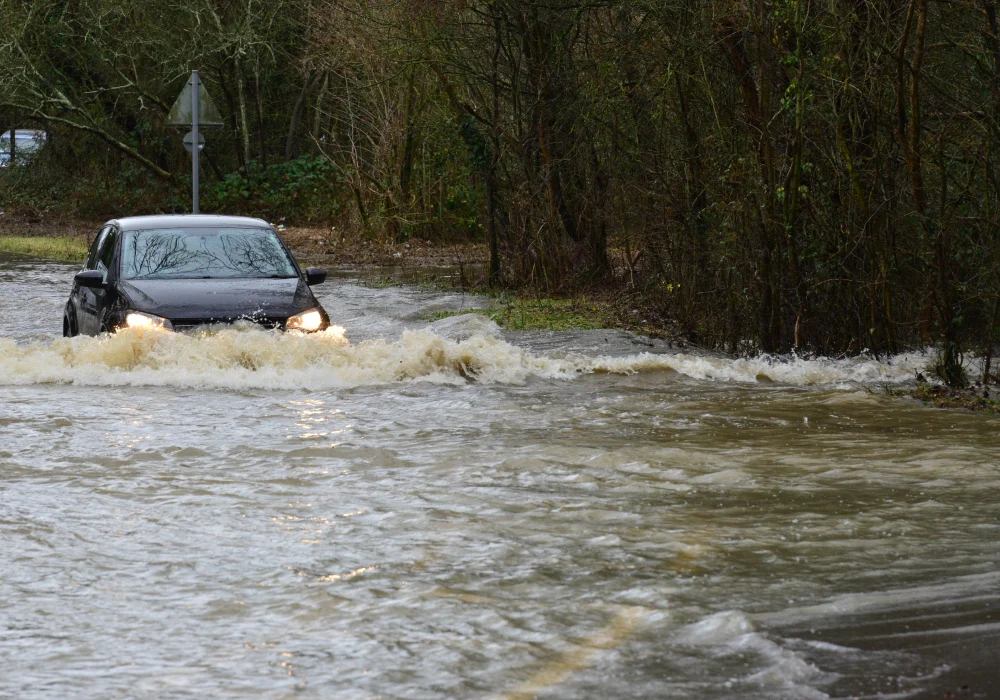
Sustainability Issues of 2020
What will be the big sustainability issues in 2020?
Each year we look to identify the emerging and fast-moving sustainability issues we believe will shape sustainable business practice. In 2020 these are not wholly new, but existing issues continue to gather momentum, move from the edge to the mainstream or become the focus of policy and business attention.
Here are the high-level issues which should be on your sustainable business agenda in 2020. Each one either links (or will link in coming weeks) to a stand-alone article, providing more detail and insight.
What’s occurring in 2020?
Or, what were we looking forward to before the beginning of the year?
- In September 2020 the Biodiversity Leaders Summit will be held. This will provide
an opportunity for national leaders to move on from the faltering delivery of
the current, “Aichi targets” (these were adopted by the Convention on
Biological Diversity (CBD) at its Nagoya conference to drive focus and activity
on biodiversity between 2011 and 2020) and agree upon urgent action necessary
to restore nature globally. - 2020 is the 75th Anniversary of the United Nations. Several environmental
targets under the Sustainable Development Goals (SDGs) will conclude in 2020 –
the overall deadlines being 2030. - The UN Convention on Biological Diversity (CBD) will hold COP 15 – its 15th
Conference of Parties in Beijing in October 2020 – where it should decide on a
new 10-year framework for biodiversity. This is important as it should lead the
way for natural recovery globally, if the goals and targets are ambitious
enough.
Nature – a super year for nature?
Nature issues are slowly climbing our collective consciousness. As WWF (and others…) put it ‘the world is where we live’. We’re waking up to the fact that we can’t continue to use our land, water, air and oceans in ways that damage, disturb, pollute and degrade them. This doesn’t just harm other species (globally, wildlife populations have declined by 60% on average in 40 years) but it also harms us – sooner or later.

Building collaboration
But we can’t just wait for governments. Leading global companies and NGOs have built the Business for Nature coalition to convene a united business voice for nature. Amongst others, they are campaigning to halt the deterioration of the natural world and decline of life on Earth. They are calling on governments to adopt an ambitious new deal for nature that recognises the moral, economic and practical necessity to protect nature.
Some leading businesses already understand their dependencies and reliance upon nature and natural systems; the nature of bilateral risks and how they rely upon natural capital to build long term value. However, they are just a few. This needs to become common and accepted practice. In addition, there is still a gap between recognising relationships and dependencies, and building sustainable and rejuvenative business models for a flourishing future.
Climate – real climate action?
Climate will remain perhaps the most vital sustainability issue of 2020. The UN’s Climate Change framework reaches the make or break stage in 2020, but the crucial question is, will attention finally convert into meaningful and proportionate action?
Will 2020 bring real climate action?
2019 was notable for its focus on climate. Perhaps at least partly due to Greta Thunberg’s persistence, global reach and profile and related, global rise of the school strikes movement, highlighting the generational pressure to respond to the threat to children’s futures.
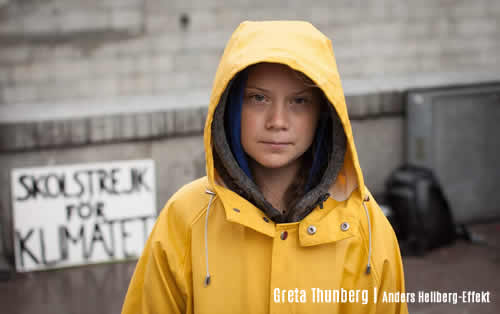
Climate will remain perhaps the most vital sustainability issue of 2020, but the crucial question is: will attention finally convert into meaningful and proportionate action?
The 1992 United Nations Framework Convention on Climate Change required all signatories (almost every country on earth) to avoid dangerous climate change, it also articulated the need to find equitable ways to reduce global greenhouse gas emissions.
“If we rely only on the current climate commitments of the Paris Agreement, temperatures can be expected to rise to 3.2°C this century. Temperatures have already increased 1.1°C, leaving families, homes and communities devastated.“
– UNEP Emissions Gap Report 2019
At face value, Europe has done well on reducing emissions, but this masks a wider problem. Since 1990 global atmospheric CO2 concentrations have increased every year, last year reaching 2.7ppm.
China is still the largest emitter, producing nearly twice its nearest rival. The USA, EU and India remain major polluters contributing to over 55% of total emissions. These rankings do not include land-use change related emissions – if they did, Brazil could be the largest emitter for forest loss.
So why is there still a global increase? It is important to consider the import of emissions. China is largely the greatest emitter because in Europe, and elsewhere, we have effectively outsourced manufacturing there. So, despite having carbon polices and apparently falling emissions, Europe is not improving overall performance as we’re importing emissions from China.
The European Commission has recognised the need for carbon border taxes on imports to deal with this issue, but the proposal is some years away from becoming reality.
Evolving business purpose
In 2019 we saw an acceleration in the recognition and acknowledgement that a simple focus upon profit and shareholder returns is simply not enough for business in the 21st Century. We believe that 2020 will see this agenda continue to grow, with a focus on the need for organisations to clearly demonstrate how they provide social and ecological utility.
A focus on business purpose will help build failing trust and align direction with global goals. Read more on business purpose >>
Reporting and Disclosure
2020 will see further progress in sustainability reporting, especially key elements such as risk, resilience, climate, water and the UN Sustainable Development Goals (SDGs) moving from the periphery of corporate disclosure to be a required element of corporate communications to regulators, investors and wider stakeholders.
Plastics
The more we learn about the global plastic pollution problem the more significant it seems. From the science which tells us just how much and how far plastic pollution has spread, to the recognition of the significant contribution that the plastic production and use contributes to climate change. Set against this are the continuing development of responses, from societal and policy approaches to address single use plastics, to the development of circular economy solutions and the continuing development of bio-based and lower impact alternatives. Plastics will be a major sustainability focus in 2020.
As of the end of 2020, it was published that human-made materials now outweigh Earth’s entire biomass. This is according to an article published by nature.com, which discusses the effects of humanity on the planet.

Air quality
The World Health Organisation estimates that 80% of people around the world living in urban areas where air quality is monitored are exposed to air which exceeds WHO guideline limits. That around 7 million people die each year due to air pollution and that 9 out of 10 people breathe polluted air.
As more of the world population moves to live in cities and urban areas, a focus on the air that we breathe, the fundamental component of life is essential.
Flooding
Flooding is a local issue, so it is difficult to make generalised statements about, but flood risk is likely to grow in 2020.
The links between flooding and climate change are complex and varied but go hand in hand. As sea levels rise and weather event severity increases, so does the occurrence, risk and severity of flooding.
To focus on the UK, in 2019 the Environment Agency warned that if global temperature continues to rise in line with current trends, that spending on domestic flood protection would need to almost double from its current level, to £1bn per year. In addition, the financial implications of flooding without investment in adequate protection, defences and mitigation were starkly highlighted by the Flood Re scheme which identified that flooding would cost the country £1.8bn annually rather than £700m with proper mitigation investment.
Business is at risk from flooding in a number of ways, from direct risk to business premises and industrial infrastructure, distribution and supply chain disruption, delivery delay to increased costs for insurance. Many businesses are sited on flat land, and often flat land is found on flood plains!
The cost of not investing in our capacity to deal with floods is far more than ignoring it. As with climate change the cost benefit analysis is clear.
Madrid, COP 25
COP25 (the 25th meeting of the Conference of the Parties to the United Nations Framework Convention on Climate Change) in 2019 was the longest on record, overrunning its schedule by 42 hours. Aiming to agree the rulebook for the earlier Paris Agreement, it was also meant to represent a statement of intent to take action.
Yet again this failed to materialise, with many decisions being further deferred to 2020.
Throughout the talks one the major areas of disagreement was around the need to agree accounting rules for the Paris Agreement’s Article 6 and the attempts to remove double-counting, an issue highlighted by Greta Thunberg.
Article 6 provides for a global market in carbon and is intended to allow richer countries to meet targets by buying credits that fund reductions in developing countries. Even if the problems are resolved and workable solution is found, offsets remain controversial because the absolute emissions cuts needed to meet science-based targets are of a greater scale and require immediate action.
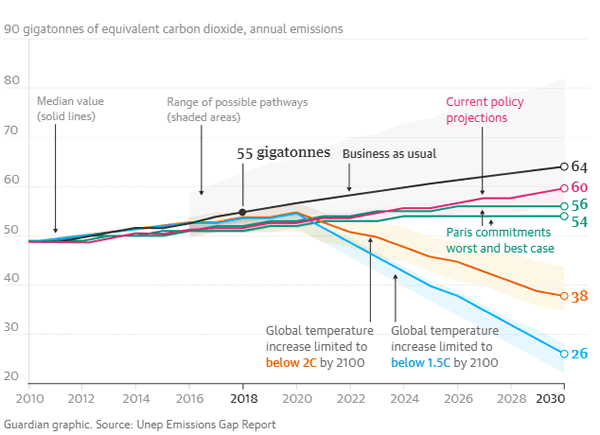
(graphic the Guardian https://www.theguardian.com/news/2019/dec/02/climate-crisis-what-is-cop-and-can-it-save-the-world)
Metrics continue to pose a problem. They provide an accounting means to convert other global warming emissions (such as methane and nitrous oxide) into a common measure expressed in terms of CO2. The metrics now in use for the Paris Agreement are different to those under the climate convention. Developed and developing countries use different global warming values for reporting emissions – as common methods were not agreed at COP 25, the negotiations have been deferred to 2020.
Where next for global agreements?
Will 2020 be the climate crunch year? The remaining sticking points will carry over to November 2020’s COP in Glasgow, some may be dealt with in the interim meeting in Bonn. The Glasgow meeting is intended to herald the implementation of the Paris agreement.
The biggest question is, with a history of non-achievement, is the COP process fit for purpose? If we keep trying the same thing will we get the same results? The problem is, it is all we have, and international collaboration is essential to deal with a global crisis.
Somehow, we just have to find a way to make it work. But hope is not a strategy.
To meet the objectives set at Paris, national targets must be more ambitious still and the deadline is 2020. But we need to go further, beyond Paris agreements, to even approach 2 or even 1.5 degree ambitions.

With climate disruption manifesting as more extreme, faster moving and more unpredictable with every passing year, such failures in international governance look more and more like fiddling while Rome (or Australia) burns.
Sustainability Issues of 2019
“Never prophesy, especially about the future.”
Samuel Goldwyn
What will be the sustainable business trends in 2019? 2018 saw many companies caught out on the issue of plastics, few people expected it to blow up so fast, or to catch the public’s attention so deeply, or to cause so much disruption.
“If it’s not in my annual management plan then I’m not interested”. That (to paraphrase) is what I was told recently by a senior manager in a leading company. The response begs the question of just which issues make it into strategy and plans and just how can you react to fast-moving issues?
Prediction is always a perilous endeavour, but as in previous years we’re looking at what businesses will (or really should be) focusing on in 2019.
To do so we’ve looked at the fast-moving issues which gained momentum in 2018 and at emerging issues that could grow in 2019. We’ve also picked issues that apply or arise in different ways, whether at a company level or in the wider environment or society.
The biggest trends are about a growing awareness of context, i.e. moving beyond doing a good job with respect to peers or sector norms, to assessing and setting performance in the context of the wider world on a quantitative and scientific basis. Related to this is the fact that there are large degrees of interrelatedness and inter-dependency in all sustainability issues. No issue arises, or can be dealt with effectively, in isolation.
There is perhaps, finally, a growing consensus that taking steps to address the challenges that the planet faces are indivisible from saving ourselves. The environment is not separate from us and our wellbeing, and neither is the economy. Global shared intentions such as the UN’s Sustainable Development Goals has helped highlight this, as has Kate Raworth’s Doughnut Economics which graphically (in both senses) made the link between social values and a safe global environment for humanity.
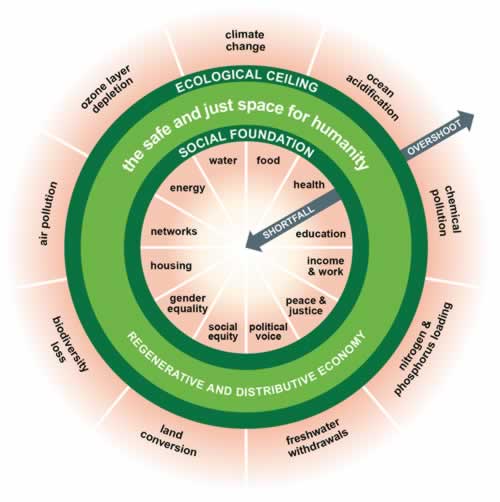
Science-based targets – boiling a frog (1)
We’ve long worked with clients to explore how wide/far and fast they should be moving on different sustainability issues. This often includes looking at current best practice – but what if best practice isn’t enough? What if we’re in the classic boiling a frog situation where the ‘environment’ is changing relatively slowly but abruptly meets a perilous position? Science-based targets seek to address this question by using what we know in terms of planetary science to inform the goals we set and the pace at which we need to achieve them. In some areas the science isn’t clear enough to fully support this approach. However, its nearly always still clear what needs to be done or avoided. There is likely to be an increased focus therefore on ‘sustainability context‘ as leading companies strive to set goals and demonstrate positive impacts that are objectively meaningful and not simply based upon relative performance compared to peers.

Biodiversity loss – boiling a frog (2)
Frogs are being threatened by more than just metaphors. Amphibians – along with other vertebrates (and invertebrates) are already in metaphorical hot water. WWF and ZSL’s Living Planet Report showed that the Earth has lost c. 60% of vertebrates since 1970. It’s important to understand this isn’t loss of species per se (although species are becoming extinct at an alarming rate too) it’s loss in the number of animals. Put simply there are estimated to be 60% fewer animals alive than there were 50 years ago. That’s a shocking headline, but will it lead to more action on biodiversity? It’s not clear; biodiversity is complex and difficult to engage with, but public and corporate awareness is rising and the need is pressing.
While there’s increased focus on climate change, biodiversity issues are increasingly coming to the fore. As we write, the latest climate conference (COP 24) was closing in Poland (see below). Making fewer headlines was COP (Conference of the Parties) 14. The governing bodies of the Convention on Biological Diversity met at Sharm El-Sheikh in Egypt, where over 190 countries joined to step up efforts to halt global biodiversity loss and protect ecosystems.
The CBD (Convention on Biological Diversity), like the UN Framework on Climate Change, emerged from the Rio Earth Summit in 1992 and in a similar way has an Intergovernmental Science Policy platform (the IPBES). The CBD aims to conserve biological diversity, safeguard sustainable use of biological resources and ensure that genetic resources are fairly shared. In Spring 2019, the IBPES will publish its first assessment of global ecosystems, their state, decline, progress on targets and policy options.
The COP 24 agreed to take measures to meet the Aichi targets as set out in the Strategic Plan for Biodiversity 2011-2020. The conference also agreed on a wide-ranging participatory process for developing a post 2020 global biodiversity framework. It is expected this will agreed in 2020 at COP 15 in Beijing.
EU Sustainable Finance / TCFD ++
Mainstream finance still has a great distance to travel to truly recognise and integrate sustainability issues as sources of material risk which therefore require adequate disclosure. But there is some encouraging action on this front.
In June 2017, The Task Force of Climate-related Financial Disclosures (TCFD), released its recommendations for voluntary climate-related financial disclosures that are consistent, comparable, reliable, clear and efficient, and provide decision-useful information to lenders, insurers, and investors.
The recommendations focus upon the physical, liability and transition risks associated with climate change and what constitutes effective financial disclosure across industries.
In March of 2018, the European Union, in its Action Plan: Financing Sustainable Growth, committed to revise its guidelines on the disclosure of non-financial information in line with the “(TCFD) and the climate-related metrics…Subsequently, the guidelines will be amended to include other environmental and social factors.” (from Action 9: Strengthening sustainability disclosure and accounting rule-making).
As of September 2018, 513 organisations have expressed support for the TCFD recommendations.
Multiple Capitals
The concept of context and multiple capitals continues to grow as a core aspect of sustainability management, as we have noted in previous years.
An approach to addressing what are considered in economics as ‘externalities’ *, multiple capitals refer to a number of conditions, states and sources of value that are either unpriced or under-priced.
Two major initiatives which are developing conceptual and management tools for organisations to recognise and integrate their impacts on multiple capitals are the Natural Capital Coalition and the Social and Human Capital Coalition, producing guidance and tools.
We believe that the coming year should see organisations undertaking strategic assessments of their dependencies, impacts and vulnerabilities in relation to natural and social capitals changes by identifying a series of leading indicators which are likely to meaningfully assess their contribution to the continuing health of those capitals. This would, in turn, provide investors, regulators and society at large with an indication of the potential continued success of that company (and meaningfully describe their relationships with the natural and social systems which they depend upon).
* economic costs and benefits that lie outside or across the boundaries of conventional financial accounting.
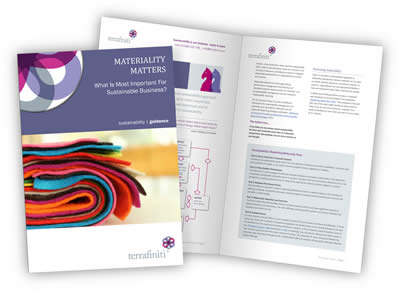
Get essential insights and guidance on Materiality, the Business Case for Sustainability, Developing Sustainable Business Culture and Sustainable Business Culture – and more – with our free sustainable business guides.
Climate – disruptive change
As we know climate change has been rumbling on for years with insufficient action to meet the scale of the challenge.
Delegates to the Global Climate Action Summit in San Francisco September 2018 called upon governments to increase climate action ahead of 2020 after which greenhouse gases need to fall quickly and continue to decrease in order to avoid the worst effects. The Summit was convened by Jerry Brown, California’s state governor and was aimed at governors and other public leaders and business executives rather than national leaders.
There were calls for action in different areas, but including:
- Global Climate Action – a call for global cooperative effort to combat climate disruption and create a safer and more prosperous future for all.
- A call for governments to develop Nationally Determined Contributions (NDCs) by 2020. These empower bottom-up climate action and plot a path to a zero-carbon future consistent with the science and goals agreed in the Paris Agreement.
- A shared investor agenda – formally launched with 400 investors representing US$32 trillion of assets*, the investors are focused on using financial flows to further climate action. Climate Action 100+ includes nearly 300 investors working with some of the highest emitting companies to align then with the Paris Agreement.
The Summit also published the Exponential Climate Action Roadmap which outlines the global economic transformation required by 2030 to meet the Paris Agreement target on climate, sector by sector including agriculture and sustainable energy.
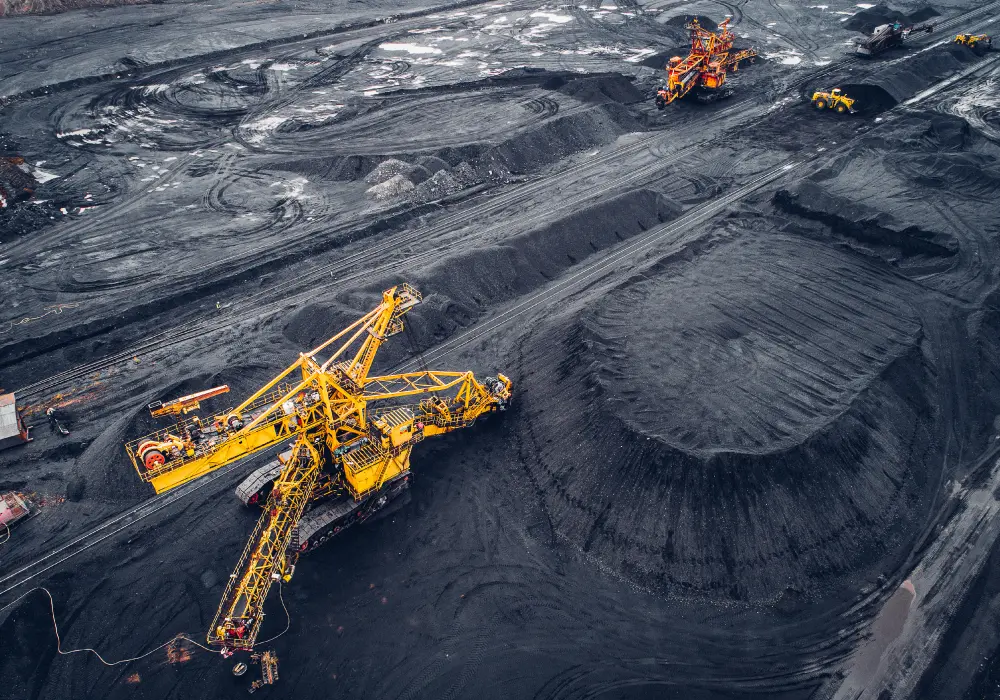
The next Climate Summit in 2019 will focus on the sectors with the greatest emissions.
* While the investors represent/manage funds with these asset values, normally only much smaller figures are invested in low carbon initiatives.
COP 24 Poland
In December, the UN process continued with countries meeting in Katowice Poland for COP 24 to agree the ‘Rule Book’ for how the Paris Agreement will be implemented in 2020.
The conference was mired in disagreement, mainly over how to deal with the UN IPCC’s findings on the risks of overshooting a 1.5 degree rise in global temperatures. The Paris Accord agreed a 2-degree target by 2020 but representatives of many vulnerable countries wanted to amend this to 1.5 degrees. This was resisted by oil-producing countries including the US, Russia, Kuwait and Saudi Arabia. Compromises were made but without full agreement and acceptance of the 1.5 degree target.
Meanwhile, the US has withdrawn from prominence, looking to step away from the Paris Agreement in 2020, China and the EU supported plans for common reporting and accounting systems for emission reductions and the US achieved one of its objectives of ensuring it is subject to similar regulations as China.
“You cannot cut a deal with science, you cannot negotiate with the laws of physics”
Mohamed Nasheed, former president of the Maldives.
So, what was the outcome? The headline is that 196 countries agreed a deal, in the form of a rulebook on the Paris 2015 Agreement – but this masks the significant disquiet felt by many nations.
Any agreement is better than none, however the current pledges on emissions will most likely limit warming to the 3 degrees level, requiring far deeper and faster cuts in the near future if the world is going to meet levels that scientists think are anywhere near safe.
Ironically, the conference venue was decorated with displays of coal. Poland is heavily dependent upon coal for energy generation, the most carbon intensive source of energy.

But perhaps one of the most notable features of the conference was the role of young people. More attended the conference and they made their presence felt. Greta Thunberg, a 15-year-old Swedish student hit social media memes with her daily press conferences and organisation of school strikes. Greta told global leaders: “You are not mature enough to tell it like is, even that burden you leave to us children. But I don’t care about being popular. I care about climate justice and the living planet.”
Plastics
There have been several interesting facets to the plastics phenomenon. Plastics have long been on the radar for sustainability professionals, environmentalists and some NGOs. Plastic micro-beads were the subject of long-running campaigns, and finally action, through voluntary and regulatory action.
This was before Blue Planet II caught the public’s imagination with a tide (pun intended) of awareness, anger and calls for action. Perhaps it was the combination of characteristics, cute animals suffering, the growing awareness that we’re also poisoning own food chain and increased understanding of wider climate and environmental issues. It’s unclear, but it has generated enough momentum for politicians to consider taking action. Like many decisions taken in a hurry, picking alternatives in haste can mean that one ill is substituted for another – albeit with different characteristics. While paper bags for example, don’t have the plastic waste end of life issues, they can drive deforestation, have a higher carbon footprint (they’re heavier to transport by road) and are only likely to be used once by consumers. They are unlikely to be more sustainable*, just have other issues in the trade-off for ‘good’ solution.

One of the most interesting aspects of plastic is the widespread awareness means that businesses of all sizes are encountering requests to reduce plastic use, not just corporates.
* More sustainable – in common parlance this of course really means ‘less unsustainable’ – like other terms such as ‘planet friendly’ etc.
Building Collaboration- evolving the role and responsibility of business
Sustainable outcomes require companies to work outside their boundaries as issues and challenges often lie across the boundaries of any one organisation, country or sector.
Companies are increasingly recognising that they will need to develop new models of partnership and engagement if they are to respond adequately to emerging environmental and social challenges.
This can include:
- Work to adjust the ‘enabling conditions’, values, drivers and rules that can either arrest or accelerate sustainable business.
- Partnerships with organisations in different parts of value chains to achieve wholesale change in the dynamics of these chains – examples would include commodity focused initiative on tea, chocolate, coffee etc (such as those convened by IDH, the Dutch Sustainable Trade Initiative)
Many of these aspects relate to the previous theme of social utility and the notion of common-self-interest. Companies truly engaged in sustainability will need to undertake activities within their own direct spheres of control and influence, but also engage in wider activities designed to evolve norms, values and the rules of business.
Between organisations – corporate activism
The 2018 Trust Barometer Survey from Edelman highlights that consumers are increasing their expectations of companies to undertake activism in social and environmental dimensions.
They found that:
- Trust in companies headquartered in the U.S. has dropped five points from 55 to 50% just in the last year, after having already fallen from 61% in 2014.
- Sixty-four percent of respondents agree that CEOs should take the lead on (social) change rather than waiting for government to impose it.
- 79% of U.S. employees trust their employers to do what is right.
Various collective initiatives have been developed in recent years to address social/environmental issues which are beyond the ability of any single organisation to resolve. This is likely to grow further in 2019, especially as our understanding of the scale of likely climate disruption grows.
Disruption is highly likely in agricultural supply chains, particularly in developing markets. While philanthropic partnerships have long featured in business’s CSR approaches, the understanding of value gained through deeper partnerships continues to grow. This is driven by both value and values. Companies want to engage at a more meaningful level, over longer periods than the superficial aspects of donating money and/or unskilled (as in not using staff competencies in activities) staff time. Longer, deeper engagements are more difficult to nurture but generate greater value for both parties.
For information and guidance on how your company can develop as an activity for sustainable change see Act now for sustainability! Should companies be activists?
Implementation challenges
The evolution of sustainability management in companies has continued, although after a period of growth there’s been some consolidation for many, while the leaders forge ahead.
There appears to be some stalling in implementation as strategies run out of steam or fail to embed. This is normally down to issues to do with leadership and governance. It might appear dull – but it’s serious.
There’s a huge implementation gap – between what planetary science suggests needs to be done, commitments made and real action that can be verified.
What are the challenges? They tend to boil down to the following:
- Not having a plan or strategy
- Having a poor plan that falls short on scope
- A plan that’s isolated on unsupported
- Lack of leadership understanding or support
- Seeing CSR/sustainability as a cost not a value centre
Sustainable capacity within organisations
While the idea of building sustainability skills and understanding at scale within organisations is not a new idea, our work has seen this become an increasing priority that will grow further over 2019.
As sustainability becomes increasingly understood as a strategic priority of value to investors, customers and consumers and the subject of strengthened disclosure and reporting rules, there is also a requirement for sustainability within organisations to the focus of the many, not the few.
Even within some leading companies you can find examples where sustainability is not truly owned by leadership and the organisation as a whole but is still the ‘problem’ of dedicated sustainability managers and teams.
Building wider ownership of sustainability and embedding it within corporate culture is an increasing focus of sustainability management. This is manifesting within companies as leadership which understands that better outcomes are more likely to be realised through spreading understanding and responsibility for sustainability across the organisation, not simply building expertise in single departments.
Conclusions
Sustainable business trends in 2019 will be moving fast, here is our quick summary:
- More strategic approaches are required – to demonstrate how organisations have analysed what they depend upon and are vulnerable to.
- New issues are emerging which organisations need to recognise, assess, manage and communicate.
- Existing issues are growing in importance to key stakeholders.
- Organisations will need to raise their game in demonstrating how they understand and communicate sustainability in terms of risk, value and opportunity to essential stakeholders.
- Everyone is becoming more interested in meaningful targets and demonstrable impact/progress.
- A focus on building real sustainable cultures is increasingly required.
- Empty promises and lack of consistency won’t cut it any more – real commitment means real change.
Sustainability Issues of 2018
“I never am really satisfied that I understand anything; because, understand it well as I may, my comprehension can only be an infinitesimal fraction of all I want to understand.”
Ada Lovelace
What will be the sustainability trends in 2018?
What will be the sustainability trends in 2018? The last few years have been, not to understate it, somewhat unpredictable. While in this context it might seem rather difficult to make predictions for 2018, we believe a number of key sustainability trends will continue to influence organisational practice.

Some of these sustainability trends are of course not new. Many of them build upon those we highlighted last year (which can be viewed in the ‘sustainability issues of 2017’ tab), representing a continuation of issues and themes that have been building in recent years. However, there is often a lag between the recognition of an issue and that issue being translated into corporate management priorities which might give rise to changes in behaviour.
Below, we provide a brief overview of new and building trends that we think will grow in relevance for business sustainability in the coming year, as well as highlighting some questions to consider when focusing upon the sustainability of your organisation:
- Carbon reduction
- Plastics and ocean pollution
- Global mega trends
- UN Sustainable Development Goals (SDGs)
- Sustainability Reporting
- Taxation
Carbon reduction is stepping up
Despite the US Government exiting the Paris Agreement it looks like many US states and companies are moving forward with plans for action both on carbon emissions reduction but also accelerating renewable energy production.
Alongside this, investors are getting in on the act, increasingly moving away from fossil fuel funding. For instance, at the One Planet Summit on 12th December 2017, the World Bank committed itself (among other things) to cease funding new oil and gas exploration from 2019. It was joined in this declaration by announcements from both the insurance company AXA and the bank ING, that they would be divesting from fossil fuel projects, with a particular focus upon reducing their exposure to coal.
Beyond company undertakings, some countries are also making commitments to reduce fossil fuel dependency. The UK Government made the headlines in 2017 with its decision to ban the sale of diesel and petrol cars from 2040. Some commentators have suggested that this simply allows the UK to appear progressive while essentially delaying a problematic transition for future governments. It could also be said that their commitment provides a clear picture of the need for more sustainable transport over coming decades. In contrast to the UK Government’s rather mixed approach to new fossil fuel discovery (the 2017 UK Autumn Budget also gave tax breaks to new North Sea oil exploration), on 19th December 2017 the French Government passed legislation to ban all exploration of oil and natural gas in its territories by 2040. However, while 2040 still feels a long way off, France has also pledged that existing drilling permits will not be renewed when they expire, and no new exploration licenses will be granted, with immediate effect.
Questions to consider
- The world is moving to renewables – what is your dependency on non-renewable energy and what are your plans to go fossil free?
- Do you use diesel and what are your plans to ensure a transition to cleaner fuels or the latest technologies? Read more on the air quality issues with diesel.
- Solar and wind generation is becoming cheaper and more reliable, especially when combined with energy storage solutions, how is your company exploring the opportunities to generate your own energy or to contribute towards local or distributed generation capacity?
- How exposed is your business model to climate change risks? If you depend upon global supply chains, and especially if you have biological supply chains (food, drink, natural yarns etc.), the countries you source from will be increasingly impacted by water availability, social and demographic shifts and political instability arising from accelerating climate change.
Plastics and Ocean Pollution
The issue of plastic pollution is gathering pace. BBC’s Blue Planet 2 provided a shocking insight into the sheer scale and extent of how plastics have entered ecosystems even in the most remote parts of the world. Plastics are entering food chains, with birds and animals mistaking plastic for food and it being found in the guts of animals even at 36,000 feet down, at the bottom of the Mariana Trench. Governments are starting to respond: in the UK, a ban was introduced on plastic microbeads in cosmetic products, with an extension to other products. For an overview of the actions that have been taken so far by governments across the world, Beat the Microbead presents a timeline.
Companies have also been engaging in activities to tackle the issue, from Adidas’ plan to make more than 1 million shoes from ocean plastic, to Interface’s work with fishing communities in the Philippines to provide them with additional income in collecting ocean plastic waste for use as a recycled feedstock for their ‘Net Effect‘ floor tiling products. Other corporate focus for ocean plastics is upon the development of circular industrial and economic processes. Plastics are extremely useful, high-performing and lightweight components in many technologies, products and infrastructure. With something so vital to modern life as we know it, wouldn’t it make more sense to retain such material within our systems of production, so that they can be recycled and remanufactured, rather than giving rise to pollution on such a vast scale? The Ellen MacArthur Foundation’s New Plastics Economy Programme provides vital information on why and how we might develop new industrial models for the use and re-use of plastic.
Questions to consider
- How do you use plastic and do you know what happens to it once it leaves your control?
- Are there opportunities to innovate your approaches to make use of recovered plastic, how might this help reduce your impact and create new product differentiation? (for an insight into sustainability and competitive strategy, see sustainability; how does your business compete?).
- Beyond just reducing your use of plastics, what can you do to play a role in wider, societal, waste plastics recovery?
More global mega-trends
Companies will be increasingly required to understand how global mega-trends such as climate change, demographic shifts, increasing inequality, water issues and biodiversity loss have relevance to their business models and strategic plans.
Such investigation should become a standard aspect of their strategic analysis and planning, representing key elements of their strategic context. Beyond a simple acknowledgement that the world is changing fast, companies will need to disclose the implications of such changes for their business and demonstrate how their strategies seek to minimise their contributions to the acceleration of negative trends and maximise their positive impacts through core business.
Questions to consider
- Do you understand how global mega trends provide new sources of risk and opportunity for your business? For some tips see our guidance on exploring and managing sustainability in a fast changing and complex world or, if you prefer, a short video exploring strategic business resilience.
- Have you conducted strategic analysis to quantify these risks and opportunities?
- How are you communicating the impacts of megatrends? For an example of leading practice, see DSM’s approach.
The UN Sustainable Development Goals (SDGs)
As with most of these trends, 2018 will see a continuation and growth of activities from 2016 and 2017. For the UN Sustainable Development Goals, companies will increasingly need to understand and prove how their activities and strategies are located against the SDGs. In practice this will involve highlighting which of the SDGs have particular relevance to the business and how the company intends to contribute towards the achievement of the Goals while ensuring their activities do not undermine them.
Questions to consider
- Do you acknowledge the UN SDGs in your strategic approach to sustainability?
- Which specific SDGs have particular relevance to your business…which of them do you directly impact, either positively or negatively, and what can you do differently to play an active role in delivering the future we want?
Sustainability Reporting
How sustainability report services are handled is maturing. With the Global Reporting Initiative’s (GRI) move from guidance to standards in 2016, companies using the standards will have to ensure that their approach to reporting makes the grade.
Reporting is also, slowly, making progress in getting on investors’ agendas. Carbon and water remain areas of primary focus. However, there’s an ongoing evolution of approach, moving from a requirement for companies to disclose their environmental and social impacts, investors are increasingly asking companies to tell them how these trends and impacts manifest as risk and exposure.
One such development which will start to shape disclosure on previously “non-financial” issues in the coming years was publication in 2017 of the recommendations for effective disclosure of climate-related financial risks by the industry-led Task Force on Climate-related Financial Disclosures (TCFD).
The Task Force members were drawn from business, finance, investment and insurance, and the recommendations were characterised by the Mark Carney (Governor of the Bank of England and Chair of the Financial Stability Board) as “developed by the market for the market”.
The TCFD developed four recommendations on climate-related financial disclosures that are applicable to organisations across sectors and jurisdictions. The recommendations are structured around four thematic areas:
- Governance: The organisation’s governance around climate-related risks and opportunities.
- Strategy: The actual and potential impacts of climate-related risks and opportunities on the organisation’s businesses, strategy, and financial planning.
- Risk Management: The processes used by the organisation to identify, assess and manage climate-related risks.
- Metrics and Targets: The metrics and targets used to assess and manage relevant climate-related risks and opportunities.
Another trend in reporting we will see in 2018 is a move towards the further development of disclosure on social and natural capital impacts through more meaningful indicators of performance. At present companies tend to focus upon lagging indicators (this is how much we emitted last year) but will need to start adding some leading indicators (here is our relationship to the state and health of the natural capital we depend upon and to the resilience of the communities and societies we rely upon and sell to). Look out for our thinking on moving from lagging to leading indicators of sustainability in early 2018.
Questions to consider
- Are you focusing your reporting upon material business impacts?
- What best practice approaches do you use to guide your reporting…GRI Standards, IIRC or SASB?
- How are you dealing with multiple capitals reporting, and do you understand your dependence upon healthy natural and social capital? For example, see context based sustainability and multiple capitals management.
- How are you engaging your investors in your sustainability activities, can you demonstrate to them how sustainability minimises your risk and maximises your value creation?
- How are you acknowledging and integrating the TCFD recommendations on climate change risk disclosure and communicating with investors how you understand, mitigate and manage your climate risks?
Taxation
Responsible tax has become ever more prominent recently, with news stories on corporate tax management grabbing headlines around the world. Judging how much tax a business should pay is of course immensely difficult, and the activities of the vast majority of companies is legal. However, in the public mind, there is a difference between legal and acceptable, and the more complex approaches adopted by some companies (e.g. placing company Intellectual Property in ‘conveniently’ low tax territories) is increasingly seen as artificial and ethically problematic. The challenge though, is that it is tax revenue that allows countries to build social capital (roads, healthcare, education – useful stuff like that) which in turn supports the work forces, consumer base and intellectual capital that companies rely upon. Aggressive tax planning is more likely to be seen as evidence of an extractive approach – taking the benefits without paying the costs of doing business. Companies which can demonstrate how they provide genuine social utility should be the ones that can genuinely demonstrate that they are socially sustainable.
Questions to consider
- How do you tell your tax story, can you justify that your arrangements are appropriate and justified?
- Can you demonstrate your social utility, how do you balance the value you get from stable and functional societies with the tax you may to support their health and future viability? For further thoughts to help you explore your social purpose and impact, see our thinking on why a focus on social utility is essential.
How can we help?
The world is a complex and changing place. While it always has been, there are good reasons to believe that the economic and business norms of the past will increasingly struggle under the strain of changing times.
Over the past 20 plus years, we have pioneered approaches to sustainable strategy, reporting, skills development, sustainable innovation and vision development. We can help accelerate your current plans, assess your progress or develop strategies to build business value and mitigate risk.
Sustainability Issues of 2017
“It is always wise to look ahead, but difficult to look further than you can see.”
Winston Churchill
Why do business sustainability trends matter? Sustainability in business is gaining momentum both in profile and in practice. Increasingly sustainability is becoming part of core business strategy, where it will have the maximum impact and business advantage. However many businesses risk being left behind. If they merely react rather than act strategically their ability to generate profits and face challenges with resilience will be diminished.
Whether you are defining or refining your corporate sustainability approach what should you be looking for in 2017?
What are the key issues and opportunities for 2017?
What’s going to keep you ahead of the pack?
As ever, predicting the future is an inexact science but it’s clear that new themes are emerging, and existing issues are building momentum.

Our focus here is upon sustainability for organisations: how they understand and respond strategically to social and environmental issues as a fundamental component of future business success.
What are the big sustainability issues for 2017?
Of course the following big sustainability trends below haven’t just popped into existence. However, we believe that 2017 will see growing momentum from companies to engage in and understand how they can build value from strategic responses to the challenges they face.
Climate change
Following on from the Paris Accord there’s an increased focus on real performance, mitigation, resilience and moving beyond risk to look at market opportunities.
Energy
Improving availability and access while responding to the low carbon agenda.
Food production
Meeting basic needs, improving quality and building resilience in the face of climate disruption and changing demands.
Water scarcity
Understanding is increasing of the linkage between food, energy and water and managing a world where there’s increasingly too little clean water in some areas and too much (flood/storms) in others.
Biodiversity
Other organisms underpin our survival and well being, yet humanity is driving global extinctions.
Changing demographics
Population growth, ageing populations in developed countries and the growth in middle classes all have labour, social, migration and development implications.
Geopolitical instability
The current order may be changing. China and India are on the rise, and with fallout from the 2008 crash still unresolved the electorate in the UK, Europe and the US have been looking for change.
The global development agenda
The 17 UN Sustainable Development Goals (SDGs) aim to end poverty, protect the planet and ensure prosperity for all. They set targets for governments, companies and civil society to achieve over the next 15 years.
Inequality and global equity
It’s becoming an annual counterpoint to the World Economic Forum annual meetings for Oxfam to highlight the headlines of the growing inequality of the current mode of capitalism. Inequity remains on the increase. Today only 8 people own the same as the world’s 3 billion poorest.
What are the key trends in business sustainability 2017?
Businesses need to respond to the issues above, but exactly how to respond and what they will need to do will vary from company to company.
Based upon our assessment, industry research and feedback from clients, we believe that the following trends will feature strongly in 2017.
Global context – the issues you can’t afford to ignore
Companies can little afford to ignore the global context in which they operate. They must be able to demonstrate how their products and services not only make them money but also make a difference to the world’s big challenges.
We outlined some of the key issues above, their relative importance (in terms of risk, security of supply, market opportunities etc.) will vary depending upon the nature of your business, its dependencies, culture, markets and the nature of your value chain. Navigating these successfully will require research and contextual agility.
Purpose
How globalisation and capitalism contribute to society is still under the spotlight. As a result of their position at the ‘coalface’, companies are increasingly looking to define and communicate their purpose and and how they better serve society’s needs. Defining and implementing purpose isn’t simply a PR or marketing exercise, it can help drive performance, win market share and improve staff retention and productivity.
For some simple and searching questions to help you assess and develop your organisation’s purpose, see our article Utility – the fundamental metric of social impact.
Transparency
Driven by political change and examples of breaches of trust by governments, companies and civil institutions, increased demands for transparency arise from citizens, consumers and customers. Social technology means it’s never been easier to discover the truth – even amongst all the noise.
It’s good to be transparent about sustainability issues and challenges, but to do so effectively means you need to know what’s going on throughout your value chain and to discover (and manage) any existing or potential issues before anyone else does. To see an example of the work we have done with clients on sustainable supply chains, see the strategy we developed for Europe’s largest snack firm, Intersnack.
Multiple capitals
The multiple capitals concept provides a way to consider additional sources of value, not just financial. Different approaches are taken to defining multiple capitals but most feature; natural, social, manufactured, human and financial capitals.
As the concept has gained wider acceptance and a number of tools have emerged to help companies consider their dependence and impact upon different capitals. Some key ones include:
- Multiple capitals at the heart of reporting sustainability, such as the International Integrated Reporting Council’s (IIRC) Capitals Framework. and the Sustainability Standards Accounting Board (SASB) Conceptual Framework.
- The Natural Capital Coalition’s Natural Capital Protocol provides guidelines to support better decision making by considering business dependencies.
- The WBCSD’s emerging Social Capital Protocol is developing a harmonised approach to measuring social value creation and impacts.
Find out more on key sustainability trends >>
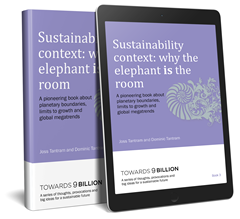
For more insight and analysis on multiple capitals, read our very affordable and accessible e-Book Sustainability Context: Why the elephant is the room, available from the Amazon Kindle Store.
Sustainability Reporting
While reporting is of course nothing new, there is increased focus on meeting demands for transparency (see above) and upon materiality (issues of strategy, performance and impact which are core to future business success).
Here are some key recent or forthcoming changes in reporting:
- The Global Reporting Initiative (GRI) has standardised – the GRI has moved from its Guidelines to a set of Standards, the first global standards for sustainability reporting.
- Integrated Reporting is gathering speed and the use of the IIRC Integrated Reporting Framework seems to be increasing.
- The World Business Council for Sustainable Development (WBCSD) has launched The Reporting Exchange. This provides comprehensive information on requirements, guidelines and regulations related to providing non-financial information.
Get the low down and guidance on key sustainability issues

For more comprehensive insight and information on the sustainability Reporting trends, get our free sustainability guidance and resources >>
Sustainability for Investors and Markets
Sustainability has long been on the agenda of specialist investors. However momentum is now growing for wider market engagement by ‘mainstream’ investors in understanding how sustainability will shape the success of their investment strategies. This move has partly been accelerated by the success of divestment campaigns, so far mainly aimed at withdrawing investment from high carbon activities or from other stocks such as tobacco. However, in line with other developments in sustainability we would expect similar initiatives to spread to other areas of activity that are considered undesirable for a sustainable future.
From a company’s perspective, improved sustainability performance can enhance access to capital, reduce the cost of capital and help attract stable long-term investors. A recent report by Nielsen found “that brands with a demonstrated commitment to sustainability saw more than 4% sales growth, while those without grew less than 1%.”
On a wider agenda, initiatives such as UNEP’s Inquiry into the Design of a Sustainable Financial System are asking big questions about the nature and purpose of finance. The underlying theme behind all this activity is the idea that sustainable investment is simply good investment, and that the world is too small and too interdependent to ignore how the money that we spend today shapes the future that we will share tomorrow.
Find out more on key sustainability issues >>
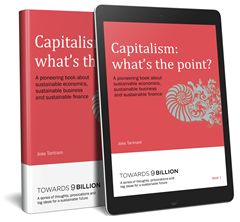
See our overview of how sustainability delivers financial outperformance >>
Interested in how our systems of value could deliver good for us financially, environmentally and socially over the long term? Read our incisive and visionary short e-Book Capitalism: What’s the point? – at the Amazon Kindle Store.
Priorities for Businesses
Of course, such issues are large and complex (to simplify greatly). They involve global citizens, governments, civil society, institutions and NGOs, and drive public and policy agendas. They also involve business – but how can your company get its head around the challenges these issues raise?
Impacts and priorities will be different in different companies and business sectors, depending upon the resources they depend upon, how they compete, their customer base and market positioning.
However, in general, these big sustainability issues will affect your company as follows:
- How your business activities depend upon and impact the issues, and the implications that changing availability, prices and risk may have for your business model – the dependencies that you have and your vulnerability to change in these dependencies
- The nature of evolving policy, regulation, investor focus and emerging sustainability standards
- Public attitudes and behaviour
- Changing customer requirements
- The changing competitive environment
These factors can either be viewed as threats to business as usual or as opportunities to innovate your business model, products and services.
Whatever the appetite for innovation and leadership in your company, these evolving issues will continue to drive the integration of sustainability considerations and priorities into the way your business undertakes the following:
- Strategic analysis and strategy development
- Risk analysis, assessment and planning
- New product development and business innovation
- Performance management
- Non-financial communication and reporting
There’s no single magic bullet to simplify what this means for any one business. However, there are practical and straightforward tools and processes which we use with our clients to identify the issues that matter for them, develop ambition, vision and strategy and plan real-world responses to maximise opportunities and build business value.
By confronting the issues that matter for you in your company and planning business-relevant action it’s possible to develop leadership, win market share and build businesses fit for the future.




